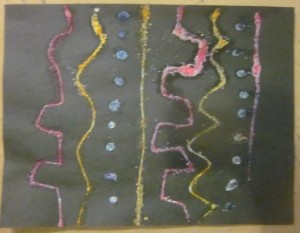
If you are looking for creative crafts then you have some inkling that most of the crafts you find online are not very creative. There are so many so called creative arts and crafts projects that don’t have an ounce of creativity in them yet, adults looking for them automatically think that if it’s crafts then must be creative.
There is art and there is crafts. Art is a process of expressing oneself through the process of creating with various media.(like in the picture above)
Crafts on the other hand is actually making something recognizable. When holidays come around parents and teachers want to make objects that symbolize the holiday. There are also times when you are not just interested in just doing art. That is when you will want a craft.
Most crafts that you will find in books and online are NOT creative.
There is however, a way to to find creative crafts ideas that can turn a craft session into a creative craft. If you want to learn how to make creative crafts projects then you may want to follow my 5 category system I call Educational Arts and Crafts.
For crafts to be creative there has to be a lot of room for the children to make choices, to think, solve problems and for their projects to look very different from the other children’s projects.
There are 5 categories in this system. They are as follows:
- Cafeteria style crafts
- Process art products
- Process art products with prepared shapes (templates)
- Decorations
- Transformed art from craft techniques
I am now going to explain each one so that you can use them as you see fit.
1-Cafeteria style:
Cafeteria style gets its name from its namesake, the cafeteria. Projects under the category cafeteria offer choices to help create the project in mind.In cafeteria style activities the adult decides the end product but not the way it should look, just the base and what materials to offer.
Example: A puppet: The adult has the children create a basic puppet and then offers a whole array of materials to decorate the puppet. This leaves lots of room for creative thought and planning and decision-making. There is no preconceived idea of how the puppets should look and each will look different.
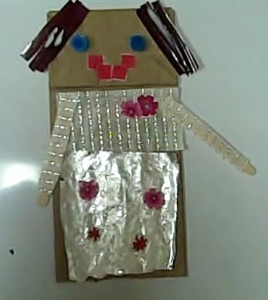
It is a good idea to start collecting various materials that you can use for these projects and storing them to have on hand.
Also be aware that too much is no good especially for very young children. Do not overwhelm them with too many materials at first.The older they are, the more you can present and in less finished form.
Younger children may need various papers cut into a few different shapes to choose from…older more experienced children may be able to look at a piece of metallic paper or piece of velvet, decide what they need out of it and cut it out themselves.
Many traditional arts and crafts projects can be adapted to an educational art approach.
2-Process only art products:
Process only art is when the children do art that is only for the process of the activity itself not the product. Much painting and drawing has no end goal in mind other than enjoyment and aesthetic awareness. There are many educators that believe that any projects with an end goal should not be done with children and that children should only do process only art.
The problem is many parents and educators and children themselves need projects sometimes and there is a way to combine process only art with projects.These activities allow the children to do activities that are process art like all of the different wonderful painting activities out there, yet once the children are done these art activity projects can be made into cards, place mats, wall hangings etc. Children get to use their creativity and sensory skills and then have a real project.
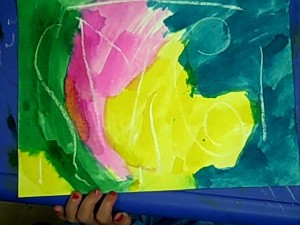
3-Process only art products with templates: (This is almost exactly as the category above with a little twist.)
Instead of doing the activity first and then making it into something, this way you give the child a paper in the shape of whatever you want the project to be and they then do the process only art activity on this paper.This is often done when the adult wants to give a holiday activity and does not want to make a traditional arts and crafts project. She therefore uses a shape from the holiday for the children to do process only art on.The shape must be large enough to give the children room to work. Especially if it is something complicated like a menorah but even simple shapes like circles and triangles can be used. Below was a collage on top of an apple shape.
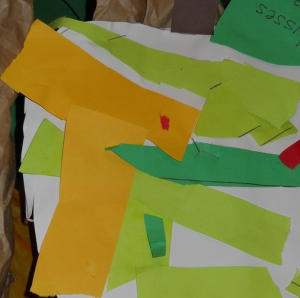
4-Decorations
There are a few holidays and themes that call for decorations. These decorations can include some of the process art and various ornaments to string and hang. There are holidays like Christmas that need decorations for trees and houses and holidays like Sukkot that need wall hangings and stringing decorations.Activities like mobiles which are purely for decorative purposes are included in this category.
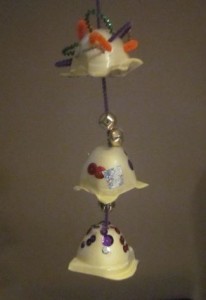
5-Transformed art
I need to make something very clear. Crafts for adults has nothing to do with crafts for children. Crafts for adults includes some of the most wonderful techniques and activities like basket weaving, woodworking, macrame, stained glass, etc.
The problem is when adults want children to create crafts like adults that children are not developmentally ready for. That is how copycat crafts was born. Adults wanted children to make the same kinds of beautiful things the adults were making. They did not understand that children are not adults and are not ready for adult activities. There is a way though for children to use some of these craft techniques without resorting to the adult projects. This way is by using some of these techniques to create transformed art.
These are activities where you take any old box, juice can, glass plate, things made out of wood etc and then use one of these crafts techniques to transform the box or can into piece of artwork that you can actually use. This way the children are concentrating on the technique itself without worrying if their project will come out exactly the way the adults does (Some crafts people call these activities altered art.)
Below is a perfect example of this. A store bought plate, tissue paper collage with some glitter and then mod podge.
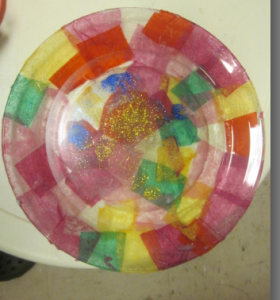
These are the only types of crafts that truly belong in a child’s repertoire. It is very unfortunate that so much of children’s lives are taken up with copycat, cookie cutter style arts and crafts that are not good for them.
Of course, if you can, real art is much better for kids and crafts should be on a need only basis.
Aside from this blog you should check out blogs like the The artful parent, artchoo and art is basic to find some really creative art and crafts.(these are only a few of some really good blogs out there).
Pin to save for later

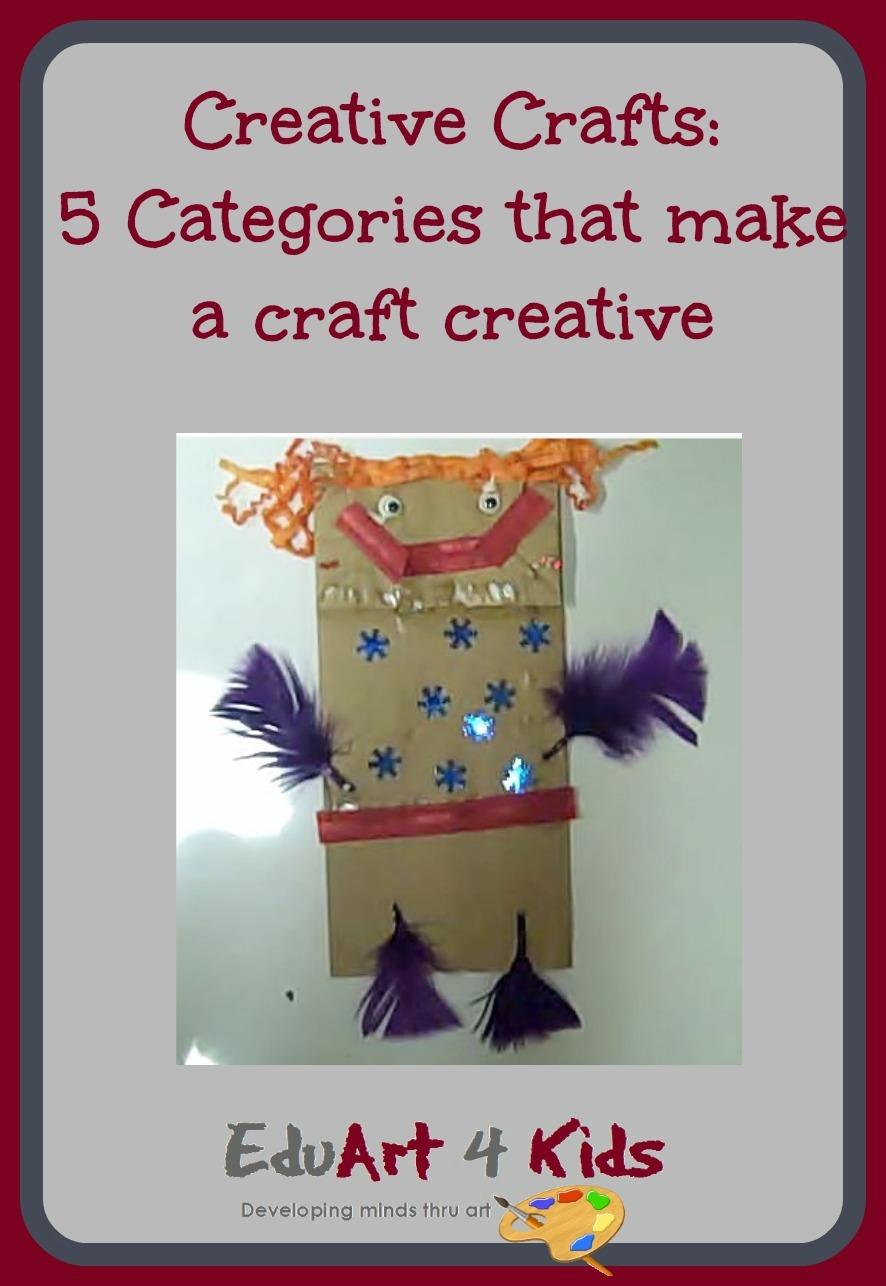
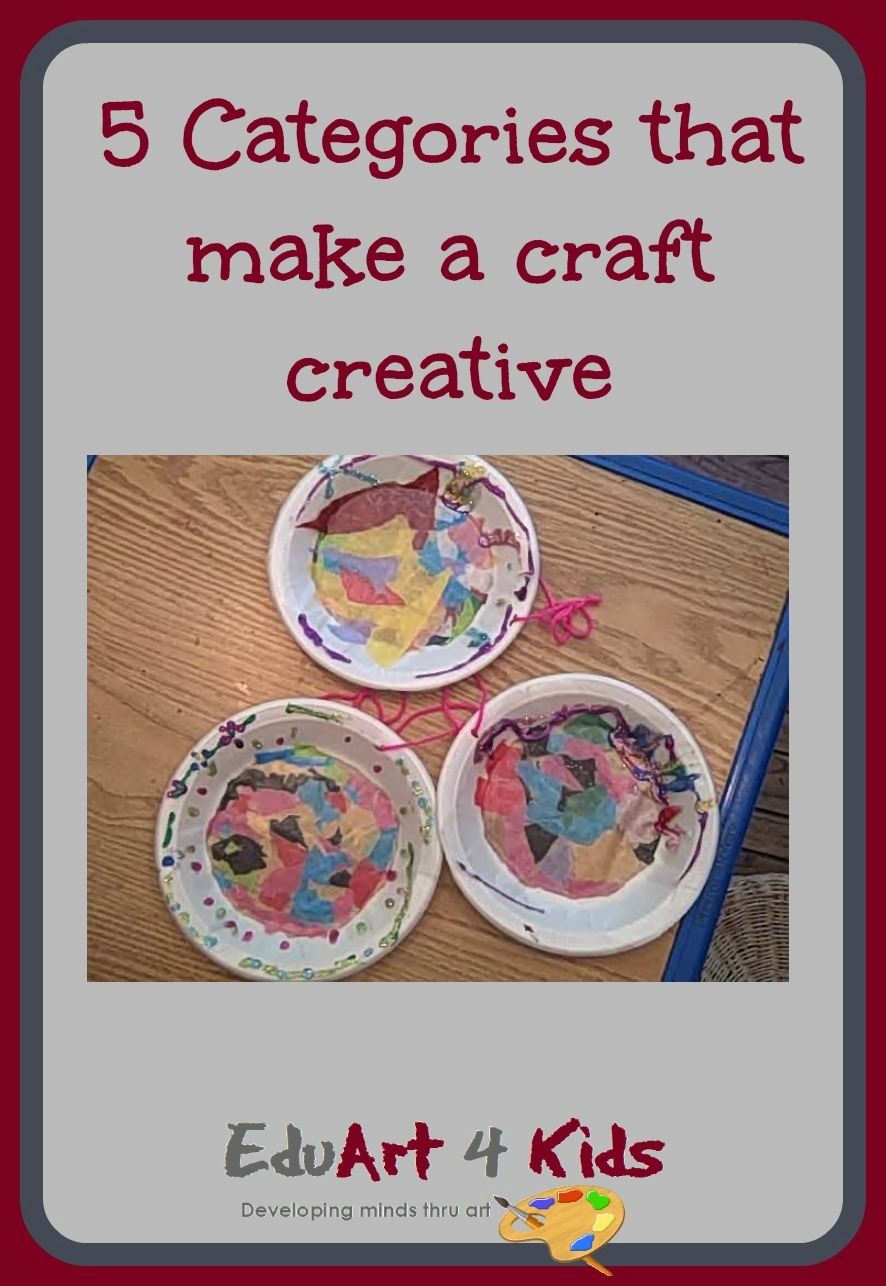


I just came across your article again in family first. I cut it out and now I’m sorting out my papers so sat down to read it. Loove everything in It and totally agree with every word. I’m a preschool teacher and try really hard gotto give the children as much self expression as possible. I let the children ‘junk model’ or paint or draw something from the Parsha so there are never any two children going home with the same project! Problem is educating the parents! Last week I saw the kindergarten teacher making snowmen with her class. She called one child at a time and painted the underside of their feet with white paint and pressed it onto blue paper and gave them googly eyes and told them where to stick them and twigs etc etc. I could have cried. She happily proclaimed look what beautiful snowmen kindergarten made! Do you have any easy to read articles for parents or co teachers?
Thank you. I know it just makes me crazy what these teachers do with their kids. You can give them the article from the family first which is linked to on the front page of this site (which is being upgraded shortly)Do you think thats too difficult for them?